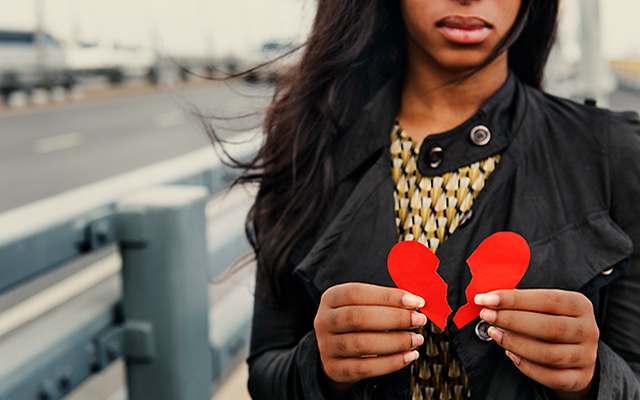“No one becomes ‘not racist,’ despite a tendency by Americans to identify themselves that way,” Ibram X. Kendi told the New York Times recently. ” We can only strive to be ‘anti-racist’ on a daily basis, to continually rededicate ourselves to the lifelong task of overcoming our country’s racist heritage.” In that spirit, the Experience Life team put together a list of anti-racist resources. Here’s what we’ve been reading, watching, and listening to lately.
13th
By Ava DuVernay
The award-winning documentary 13th by filmmaker Ava DuVernay offers a revelatory telling of the abolishment of slavery through the 13th amendment — and how its exception clause “neither slavery nor involuntary servitude, except as a punishment for crime whereof the party shall have been duly convicted, shall exist within the United States . . .” created further oppression for newly freed slaves and the generations that followed. Through interviews, footage, and rarely heard audio from politicians, activists, and more, the eye-opening storytelling aims to explain how this loophole in the 13th Amendment led to skyrocketing rates of mass incarceration in Black and brown communities. And, if like me, you’ve only heard the conventional telling of the 1980s and 1990s wealth boom, you need to see this film to understand the inequity past policies have produced.
—Courtney Lewis Opdahl, Managing Editor
“Decolonizing Yoga & Wellness”
By Constanza Eliana Chinea
Given how intertwined my personal and work lives are with fitness and wellness — I’m an avid exerciser, the fitness editor at Experience Life, and a coach at Life Time — it has been impossible to ignore the consequences of racism and white-body supremacy within these industries. While my list of educators and resources in this area is too long to list here right now, I want to highlight Constanza Eliana Chinea, a yoga teacher, activist, the founder of Embody Inclusivity, and the creator/host of the “Decolonizing Yoga & Wellness” series.
In this series, of which there are two seasons, Chinea interviews BIPOC (Black, Indigenous, and people of color) in these industries about the decolonization movement and what it truly means to be inclusive and diverse. The two seasons of this series have been eye-opening for me personally and professionally. Now more than ever I am thinking about how my intention differs from impact: How do commonplace words, tools, techniques, and spaces alienate some people while welcoming a select few? How do I reinforce this sense of alienation and selective welcoming? If I want to do better, these questions — and the actions I can take with the answers — are critical.
—Maggie Fazeli Fard, Senior Editor
My Grandmother’s Hands: Racialized Trauma and the Pathway to Mending Our Hearts and Bodies
By Resmaa Menakem
Racism is a many-tentacled thing. And it takes root not just in our minds but in our bodies, says Resmaa Menakem, MSW, LICSW, SEW. Menakem is an author, healer, and trauma specialist who lives and works in Minneapolis. In his 2017 book My Grandmother’s Hands, he suggests that we can’t effectively address the ongoing damage of racism until we squarely face our own bodily trauma. And the real toxin within racist practices is white-body supremacy: the idea that white bodies are the standard for humanity itself. This concept lives in all bodies as trauma:
Most African-Americans know trauma intimately — from their own nervous systems, from the experiences of people they love, and most often, from both. But African-Americans are not alone in this. A different but equally real form of racialized trauma lives in the bodies of most white Americans. And a third, often deeply toxic type of racialized trauma lives and breathes in the bodies of many of America’s law enforcement officers.
All three types of trauma are routinely passed from person to person and from generation to generation. This intergenerational transmission — which I less [. . .] clinically call a soul wound — occurs through families [where abuse occurs], through abusive systems, institutions, and cultural norms, and through our genes.
This means no matter what we look like, if we were born and raised in America, white-body supremacy and our adaptations to it are in our blood. Our very bodies house the unhealed dissonance and trauma of our ancestors.
This is why white-body supremacy continues to persist in America, and why so many African-Americans continue to die from it. We will not change this situation through training, traditional education, or other appeals to the cognitive brain. We need to begin with the body and its relation to trauma.
In reading the book and doing the online “101 Racialized Trauma Course,” I am learning to recognize how my own white-bodied experience can cause me to brace and resist — physically — at the very mention of race or my privilege, which my body recognizes as synonymous with safety. It matters very little that my mind is horrified by this reaction; my body could care less. It wants what it wants, which is everything it’s used to. Namely, the chance to move through the world as if my skin had nothing to do with my experience or anyone else’s. But 400 years of violent, anti-Black history culminating in George Floyd’s murder just a few miles from my home prove that this is anything but true.
The work Menakem lays out is intense, and humbling, and yet it feels more hopeful than anything I’ve read when it comes to addressing racialized trauma. He offers multiple practices for becoming more embodied and more aware of one’s physical and traumatized reaction to perceived racialized threats. He provides five anchors for getting through a trauma response without causing harm. And he makes clear that overcoming racialized trauma is a practice — not a strategy, not a plan — it is a healing practice we adopt and engage with for the rest of our lives. As it took 400 years to get us here, it might take 400 more before this trauma fully leaves all our bodies. But now seems like an excellent time to begin.
—Courtney Helgoe, Features Editor
Justice in America
By Josie Duffy Rice and Clint Smith
Podcast hosts Josie Duffy Rice and Clint Smith interview activists, organizers, journalists, and other experts about criminal-justice reform. Each new episode tackles a different issue, including topics like cash bail, mass incarceration, and the privatization of prisons, ultimately working to shed light on the racism inherent in our criminal-justice system and the myriad ways it harms poor people and people of color. Josie and Clint — along with their brilliant cast of guest hosts — are adept at untangling these incredibly thorny, complex issues and presenting them to their audience such that they’re easy to understand. The podcast is incredibly well researched, beautifully produced, informative, inspiring, and somehow not cynical. 10/10.
—Kaelyn Riley, Senior Editor
Uncomfortable Conversations With a Black Man
By Emmanuel Acho
This came across my newsfeed when it was first released online in early June, and I’ve found everything about it beneficial. Much of what I love about my work is digging into the bigger “why,” and former NFL linebacker Emmanuel Acho pushes into that territory with each new uncomfortable conversation video. As we’ve been dealing with the COVID-19 virus, Acho reminds us that, “Racism is not a virus of the body; it is a virus of the mind, and unfortunately, it can be lethal.” His first three videos, which feature an introduction to his personal experience and interviews with actor Matthew McConaughey and Chip and Joanna Gaines and their five children, are compassionate and enlightening. I greatly appreciate Acho’s willingness to educate white people on race, and his kind-yet-direct approach doesn’t leave room for flowery language — challenging for some people to hear but so necessary to make any progress. His points on why we cannot raise our kids to be “color blind” spoke to me as a mother and as a Black biracial woman growing up in the 1980s and 1990s hearing adults talk about how “we don’t see color.” Yet, we know the opposite is true in our society, that we do indeed see race, and Acho shares how we can celebrate our differences and honor our cultures to find a place of peace.
—Courtney Lewis Opdahl, Managing Editor
Me and White Supremacy: Combat Racism, Change the World, and Become a Good Ancestor
By Layla F. Saad
My anti-racism reeducation began in earnest with this book. It was a powerful (also thoughtful, practical, difficult, and uncomfortable) introduction to facing racism within myself and my community, examining the buildup of unconscious biases, and coming to terms with my longstanding inaction for fear of rocking the boat.
The book is composed of 28 chapters intended to be explored via reading and journaling over the course of four weeks. Each daily study breaks down an important concept related to white-supremacist beliefs, biases, and systems in which we all play a role (however unconsciously or unintentionally). Daily journaling prompts help readers better understand our own privilege, in order to better understand how we can effect change in our communities and in our world. The daily commitment was invaluable as I began to accumulate new knowledge and new awareness. This ritual of daily learning, daily journaling, and daily action is something I’ve carried into my life beyond the first 28 days. I recommend Me and White Supremacy every time someone asks for a recommendation, and I anticipate that it will be a personal resource that I can keep coming back to for a long time to come.
—Maggie Fazeli Fard, Senior Editor
The Warmth of Other Suns: The Epic Story of American’s Great Migration
By Isabel Wilkerson
I never asked my parents why they moved from the racially integrated neighborhood in North Minneapolis to an all-white suburb north of the city when I was 18 months old. I just assumed they’d outgrown the two-bedroom apartment they shared with their three young sons and imagined a brighter future out on the prairie.
But their suburban migration in December of 1952 coincided with a massive wave of white flight from cities all over the country, triggered by the influx of African-Americans from the South. Between 1915 and 1970, some 6 million Black people fled from Jim Crow for the promise of freedom in the North and West. This revolutionary societal shift, which Isabel Wilkerson chronicles in The Warmth of Other Suns, left an indelible imprint on American urban life: “The configuration of the cities as we know them, the social geography of black and white neighborhoods, the spread of the housing projects as well as the rise of a well-scrubbed black middle class, along with the alternating waves of white flight and suburbanization — all these grew, directly or indirectly, from the response of everyone touched by the Great Migration.”
It seemed to have little effect, however, on our sleepy little burgh — or on me and my friends. While we all watched the horrific black-and-white TV images of peaceful Black protesters battered and beaten in Selma and courageous high school girls bucking segregation in Little Rock, it all seemed too distant. We cheered when the Voting Rights Act was passed and cried when Martin Luther King Jr. was assassinated, but that was distant too. It wasn’t until I joined the military in 1970 that I could say I’d had an actual conversation with a Black person.
Though the journey Wilkerson’s subjects embarked upon was infinitely more harrowing than mine, it was similarly revelatory. They found Northern whites to be neither uniformly hateful or patronizing nor uniformly welcoming. It seems “progressive” folks who cheered civil rights advances from afar were often less celebratory when they found themselves rubbing elbows with newly liberated Black people at the corner grocery — or competing for jobs at the local factory.
These stories ring true for me now — albeit from a different perspective — some 30 years after my wife and I bought our first home in a predominantly Black neighborhood in South Minneapolis, just a few blocks from the site of George Floyd’s death. Like any other block in the city, there were folks who struggled and others who thrived, some you could depend on and others you simply couldn’t trust. Everybody knew that Harold was a little crazy, for instance, but it had nothing to do with the color of his skin — he was just a little crazy.
And despite the intermittent gang feuds and flashes of domestic dysfunction, the 11 years we spent raising our two kids there remain fixed in my memory because it always felt so real: no illusions, no stereotypes, no pretending to be something you’re not. A safe place.
Today, tales of the Great Migration come to me firsthand, from my daughter-in-law’s grandfather, whose family left its Arkansas roots to settle in St. Paul’s Rondo Neighborhood. He’s an imposing presence in his own way — we all call him Mr. Neal — and he commands the stage when spinning a yarn. So, while I’m never going to say it out loud, I can’t help but think we’ve all come a long way.
—Craig Cox, Deputy Editor
Rachel Cargle + Louiza “Weeze” Doran
Becoming more knowledgeable about anti-racism and allyship doesn’t just involve learning new things but also un-learning much of what I was taught — and have since taken for granted — about American history. Two incredible resources in this arena have been Rachel Cargle and Louiza “Weeze” Doran. Both are educators who provide tremendous amounts of information and education for free through their social-media platforms as well as subscription-based online learning platforms: Cargle’s “The Great Unlearn” is offered through Patreon, while Doran offers community calls, book club, and interview series through Podia. (I am currently enrolled in Doran’s four-part live webinar series “Culture of Whyteness,” which means I get to look forward to having my mind blown more and more each week.)
—Maggie Fazeli Fard, Senior Editor
White Rage: The Unspoken Truth of Our Racial Divide
By Carol Anderson, PhD
I was born in Rochester, NY, 1964, the year of the Civil Rights Act. My public elementary school had more Black kids than white kids. I remember when two Black women came to teach us African dance, and I was too shy, and to be honest, intimidated, to participate. My mom was in a neighborhood group that discussed race relations for kids and their parents. There was a Black woman in the group who had just moved to Rochester from Georgia, which had just recently begun to desegregate schools, and she told my mom that the issues they were working on were “nothing” compared to her hometown. “They’re still lynching people in the woods where I come from,” she said.
I have never forgotten those words and was reminded of them when I read Carole Anderson’s book White Rage: The Unspoken Truth of Our Racial Divide. It’s an amazing book, revealing the history and depth of inequality and calculated racism in the United States. White reactions to Black progress filter through laws, education, incarceration, and healthcare, affecting Black lives in so many ways that most whites are unwilling to see:
The trigger for white rage, inevitably, is black advancement. It is not the mere presence of black people that is the problem; rather, it is blackness with ambition, with drive, with purpose, with aspirations, and with demands for full and equal citizenship. It is blackness that refuses to accept subjugation, to give up. A formidable array of policy assaults and legal contortions has consistently punished black resilience, black resolve.
This book will open your eyes, as it did mine.
—Lydia Anderson, Creative Director
An Anti-Racist Reading List
The battle against racism has been waged through literature, poetry, and memoirs for decades, even centuries. Here’s our list of some of the most potent and timeless classics:
Maya Angelou, I Know Why the Caged Bird Sings (1969): This autobiography begins in Arkansas and chronicles the author’s life from age 3 to 17. It’s at times brutal and lovely, hopeful and heartbreaking, but always powerful — and just the first of her seven books of memoirs.
Saeed Jones, How We Fight for Our Lives: A Memoir (2019): The writer’s story of growing up as a gay black man in the South and fighting to become himself despite his awareness that, in our country, “Being a black gay boy is a death wish.”
James Baldwin, The Fire Next Time (1963): This book is made up of two nonfiction essays that document some of the writer’s early life in Harlem, the destructive effects of racial injustice, and the pressing need for equality in the time of the civil-rights movement.
Jesmyn Ward, Sing, Unburied, Sing (2017): This stunning novel examines the different effects of racial inequality on three generations of Black people in Mississippi.
Toni Morrison, Beloved (1987): This incredible, indelible novel deals with the ongoing effects of slavery. As Morrison’s dedication reads, “Sixty Million and more.”
Claudia Rankine, Citizen: An American Lyric (2014): A book-length poem that excavates some of the anger and anguish of living with casual, everyday racism in the United States.
Richard Wright, Native Son (1940): This unflinching novel — based in part on Wright’s own life and the arrest and trial of another young man — tells the story of a Black youth growing up in poverty on the South Side of Chicago in the 1930s who cannot escape his disturbing, preordained destiny in a racist society. —Kaelyn Riley, Senior Editor, and Michael Dregni, Deputy Editor





This Post Has 0 Comments